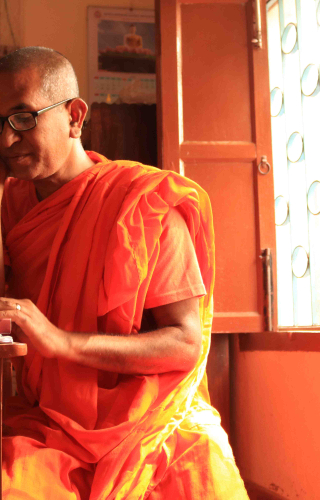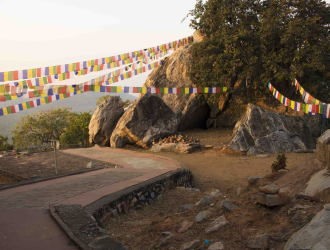Rajgir, a historic town in South Bihar, represents the confluence of five religions: Hinduism, Sikhism, Islam, Buddhism and Jainism. As a result, it bears traces of these divese religious influences, with numerous architectural and archaeological manifestations dotting the landscape. Rajgir has long been famous for its strong Buddhist presence, attracting huge crowds of tourists and devotees from all over India, Japan, Sri Lanka and China, to name only a few countries. As the tradition goes, the first Buddhist Council was held in Rajgir, in the Saptaparni caves on the Vaibharagiri Hill. The Lotus Sutra or Saddharma Pundarika Sutra was revealed in Rajgir, leading to the later establishment of the Tiantai, Tendai, Cheontae, and Nichiren schools of Buddhism. Buddha is also said to have been ushered towards Bodh Gaya as the place of his enlightenment, by a declaration from the skies that announced Rajgir as a potent place but not the site that would lead to his enlightenment. His site of meditation is known as the sixth hill—Rajgir is surrounded by five hills—named Griddhakuta (Vulture's Peak). The Ratnagiri hill which envelops Griddhakuta, has Rajgir's World Peace Pagoda or Vishwa Shanti Stupa, constructed by the Nipponzan-Myohoji sect in 1969. Rajgir also has two Japanese temples, the Bauddha Dharmankur Sabha, and a Burmese Temple, alongside a number of monasteries that cater to the flow of tourists and resident monks.















